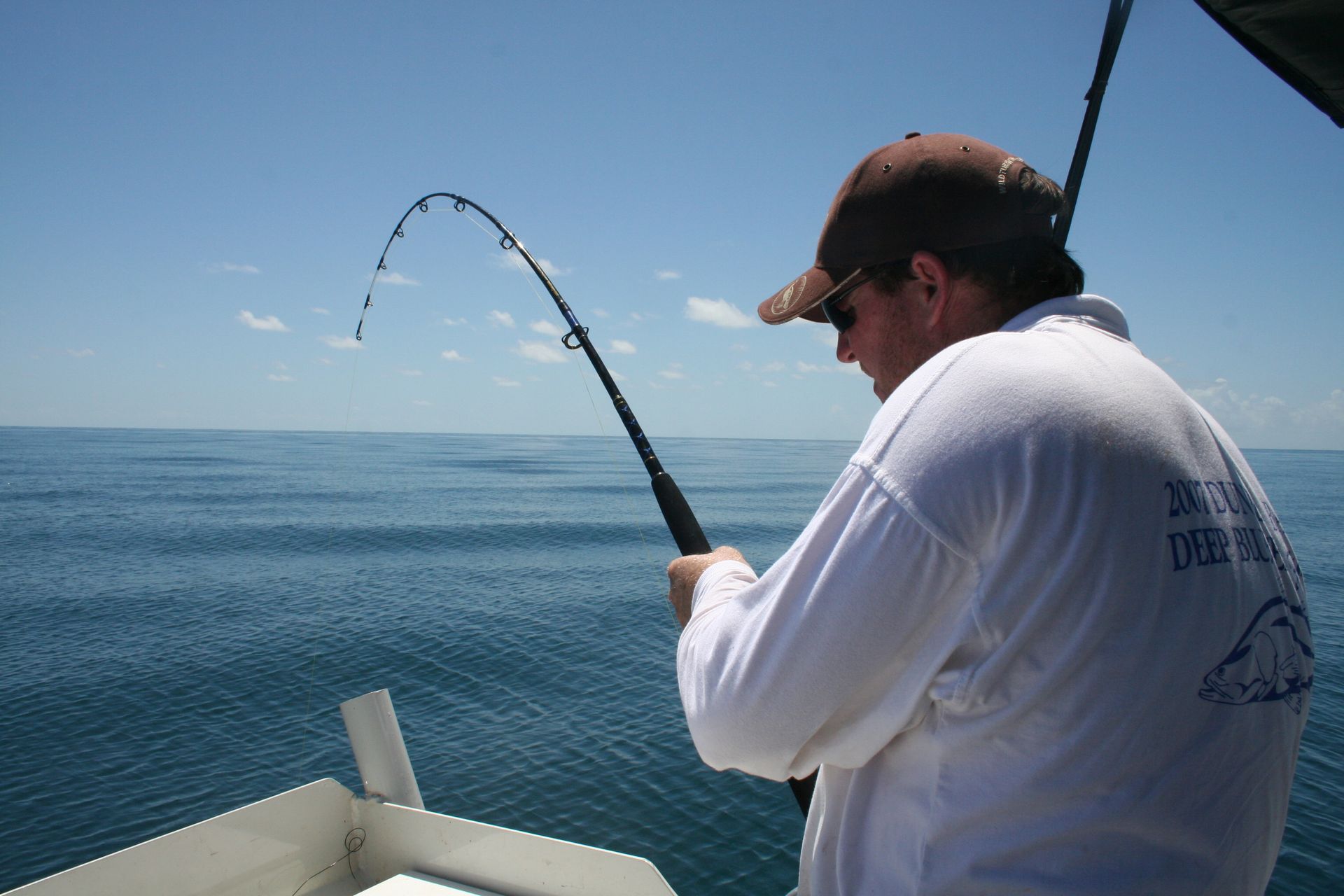CATCH & RELEASE . . . for some species but not others!
With intense pressure on marine environments like Dundee Beach, it’s up to all of us to take action to preserve fisheries in the region.
Is catch and release a good option to preserve fish stocks?
It may be, depending on the species is the short answer. Some species will not survive catch and release due to ‘barotrauma’.
What is barotrauma?
This happens when a fish is hauled up from deep water. Rapid change in pressure cause gases in the fish’s body to change resulting in a range of injuries that will most likely be fatal to the fish.
Sometimes these symptoms are evident like bulging eyes, stomach pushed out through the mouth, bloating and protruding intestines. Other times internal injuries may not be visible but the fish may not survive. They may appear to swim away happily but the damage is probably already done.
Which species are affected by barotrauma?
Black jewfish, golden snapper, emperor (except for Red Emperor) cod, coral trout and many reef fish species when caught in water deeper than 10 metres.
Barramundi and salmon as well as pelagic species such as trevally, tuna, queenfish, mackerel and the like do not suffer barotrauma if handled carefully as outlined below.
What can I do?
- When fishing in a depth of 10m or more, don’t target reef fish for catch and release.
- Move on to a different location and target other species less affected by barotrauma. (Change locations to avoid catching juvenile or unwanted fish.)
- Be aware of and respectful of possession limits.
- Keep reef fish (within permitted limits) as released fish are unlikely to survive.
How to help survival of released fish:
- Try to adjust tackle size to species you are targeting and keep capture time to a minimum.
- Keep fish in the net in the water until you are ready for a photo. Once out of the water, release it as quickly as possible.
- Use fish-friendly nets without knots to minimise injuries to fish skin and fin and slime coating.
- Hold and support fish horizontally, (not vertically).
- Keep it off hot boat deck and from thrashing about.
- If close to shore, set fish free near bank for recovery in protection of snags and quieter water.
- If hook is placed deeply, cut line close to the mouth and leave the hook in place.
- Hooks without barbs reduce damage to fish and make releasing easier.
- Consider depth and avoid targeting reef fish for catch and release in water deeper than 10m.
Adopting these practices gives fish the best chance of survival. We find people are interested to learn about the marine environment. Sharing and educating in simple ways about how to preserve fish stocks in our heavily frequented region just makes sense. With the high number of fishing charter operators now active in the Dundee Beach coastal and off-shore region, adopting practices for the long term will be critical to sustainability.
As an example of the many conditions at play for fish stocks to be replenished, let’s look at the barramundi life cycle. Male barra turn into females at about 5 – 6 years of age (in saltwater) and can live to at least 20 years of age. It’s these big females that produce eggs during the spawning season around October (at the beginning of the wet season). Eggs and larvae are washed into mangroves and wetlands by high tides and wet season floods.
As juvenile barra grow, some move upstream to freshwater at the end of the wet season (around April). In just 1 year barra can be between 30 – 40cm and are hungry, growing young ‘uns! So, at just 1 year these fish are a decent size but need to live until 5 – 6 years to undergo their sex change (to a female). These females then need sexually mature males (3-4 yrs) for the spawning season life cycle that replenishes numbers.
It’s a delicate balance with many living things, human activities and seasonal conditions in play. Sustainability is in our hands. It is one we must surely be mindful of as caretakers.

